Search results13 results
COLLECTION
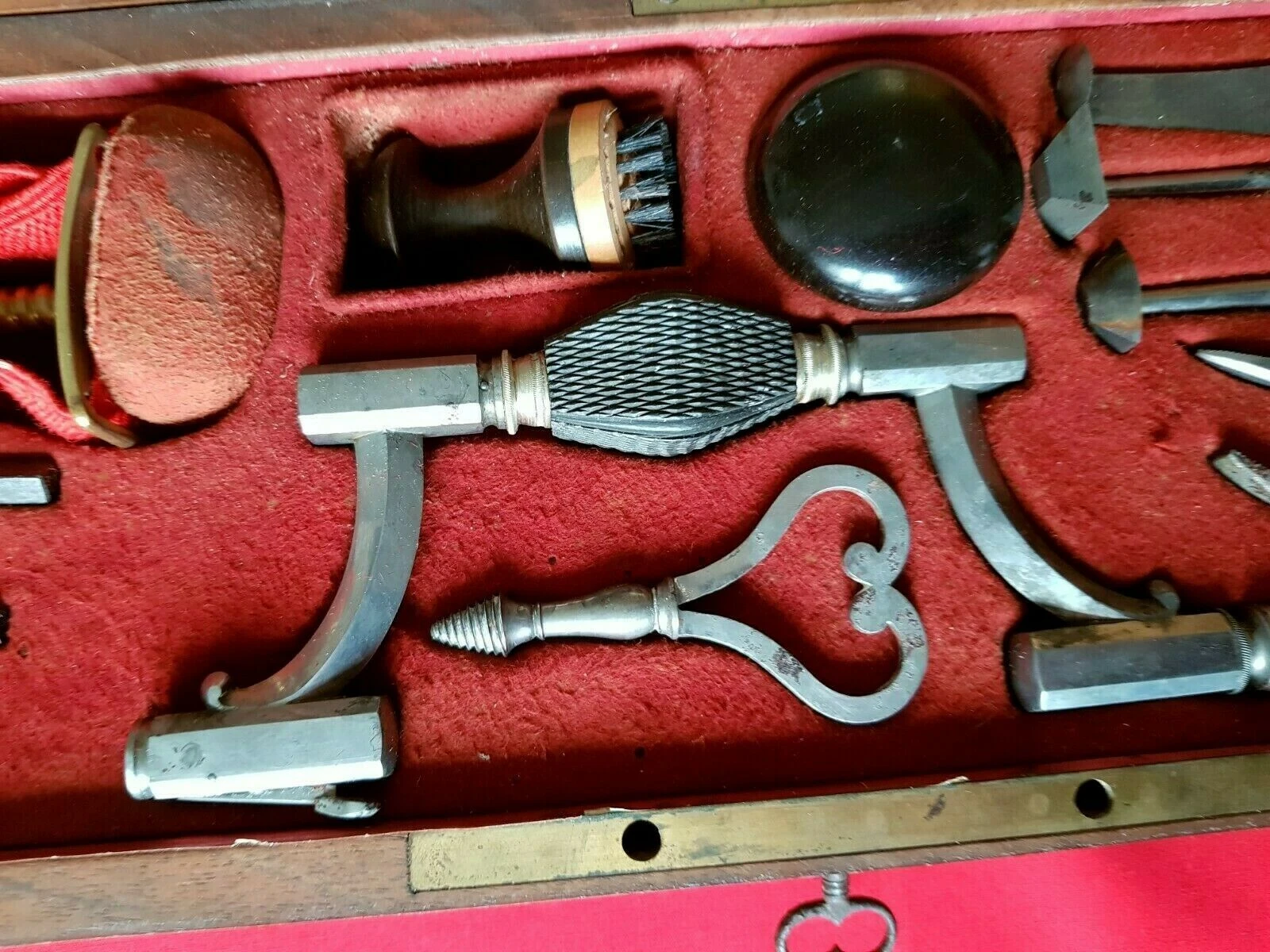
France, 19 C. 1 half
The rare French amputation kit, early 19 century, contains the typical instruments of a trauma and military surgeon, such as brace and bit cranial trephine, elevators and rugines, amputation saw, brush to clean the operative field. The case has two compartments, has original key.

France, 19 C. 2 half
The rare French amputation kit, 18 century, contains the typical instruments of a trauma and military surgeon, such as hand drills, trephine heads, amputation saw, brush to clean the operative field made by Collin / Charrière á Paris. The case has two compartments, has original key.
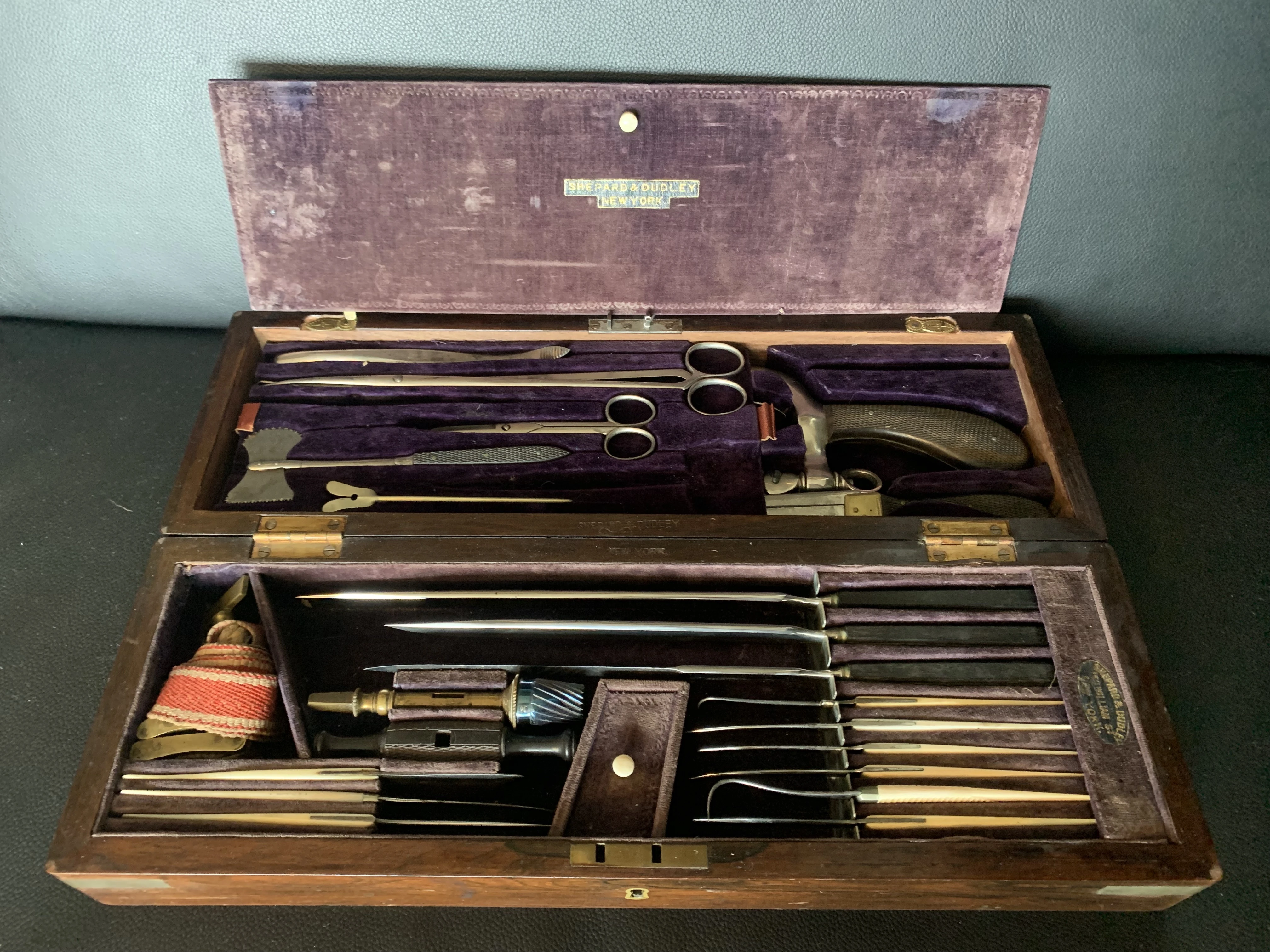
USA, 19 C. 2 half
American Amputation and trepanation cased set, by Shepard & Dudley NY, late XIX century. The wooden case contains the typical instruments of a trauma surgeon, such as amputation saw, trephine head with handle, screw tourniquet. The amputation saw and three amputation knives have ebony handles, the rest hand instruments like scalpels and hook have ivory handles. The case has two compartments lined with violet velvet. On the cover of the upper compartment, the inscription "SHEPARD & DUDLEY * NEW YORK".
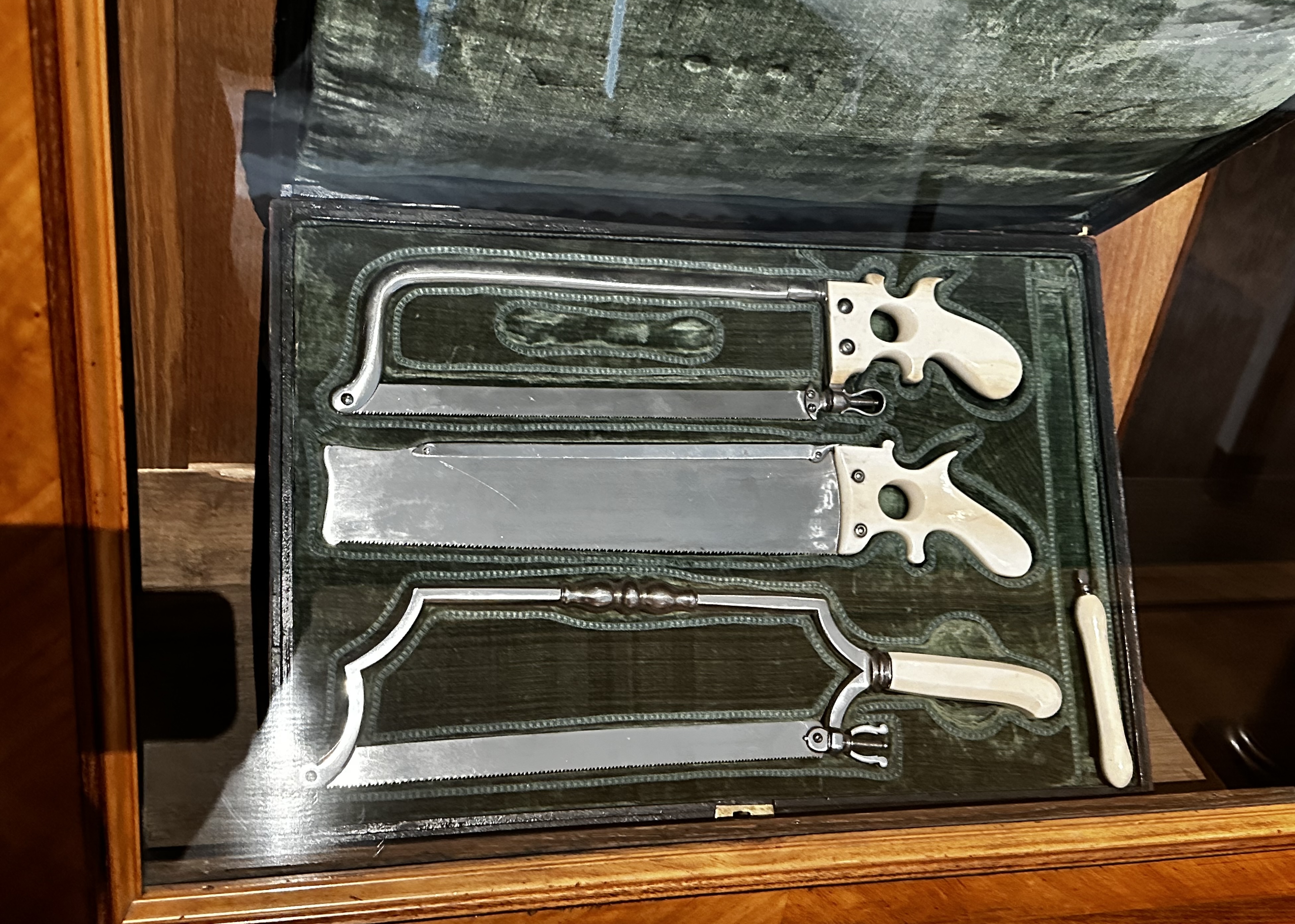
Austria, 18 C.
A collection of 65 sets of surgical instruments made by Viennese craftsman Joseph Malliard under the direction of Giovanni Alessandro Brambilla, an Italian-born Austrian surgeon eighteenth-century innovator in military surgery. Today, this collection, known as the “Instrumentarium Chirurgicum Militare Austriacum” is on display at the Josephinum Museum, Vienna
LIBRARY
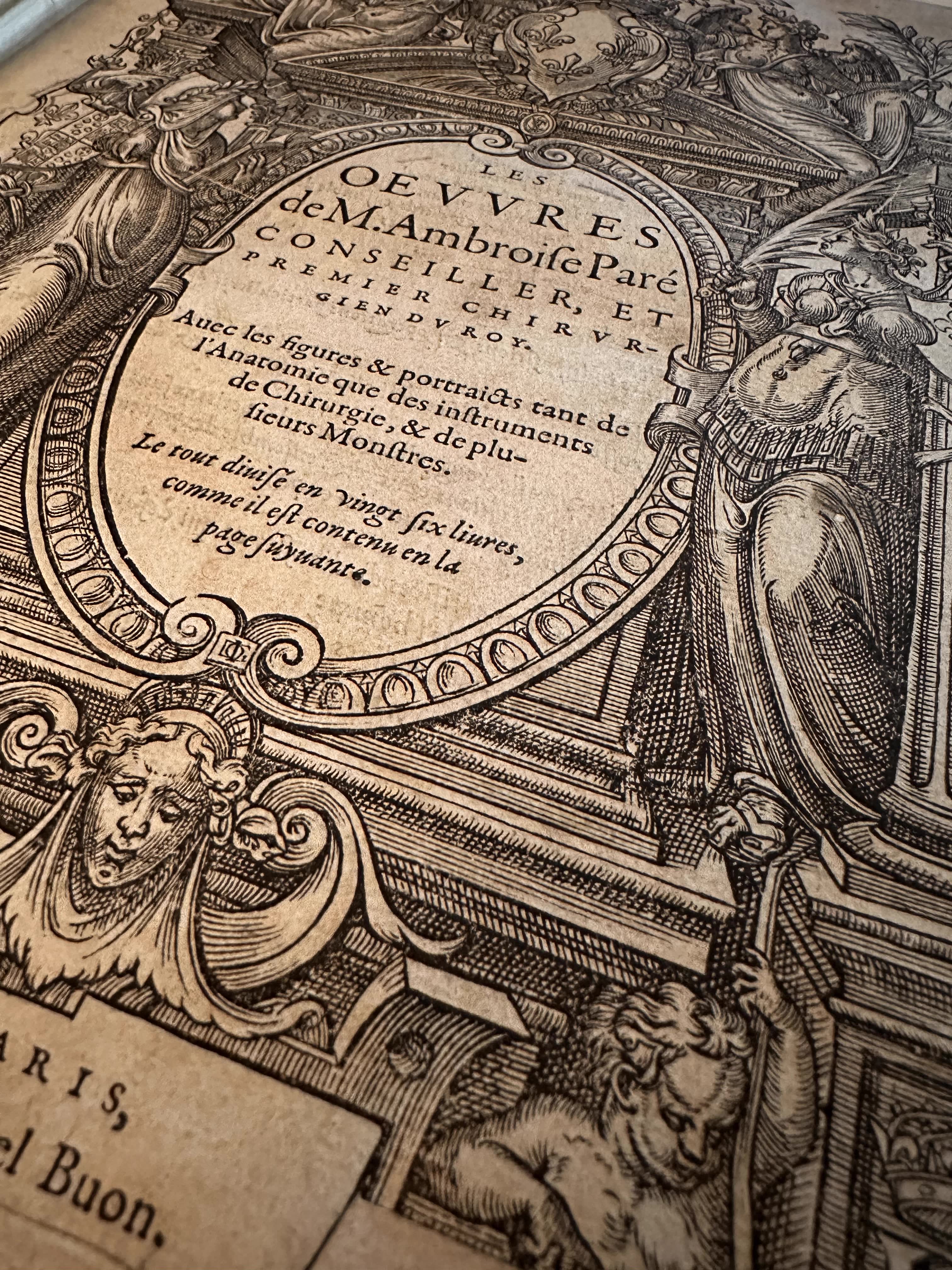
France, 16 C.
Paré, Ambroise
Paré, Ambroise, 1510?-1590. Les Œuvres de M. Ambroise Paré, conseiller et premier chirurgien du Roy. Avec les figures & portraicts tant de l'anatomie que des instruments de chirurgie, & de plusieurs monstres. Le tout divise en vingt six livres (transl. from French: The works of Mr. Ambroise Paré, advisor and first surgeon to the King. With figures & portraits of both anatomy and surgical instruments, & several monsters. The whole is divided into twenty-six books). Paris, Gabriel Buon, 1575, the first edition. This unique book is the cornerstone that laid the foundation for modern surgery in France and the rest of Europe, the most important surgical book of the 16th century.
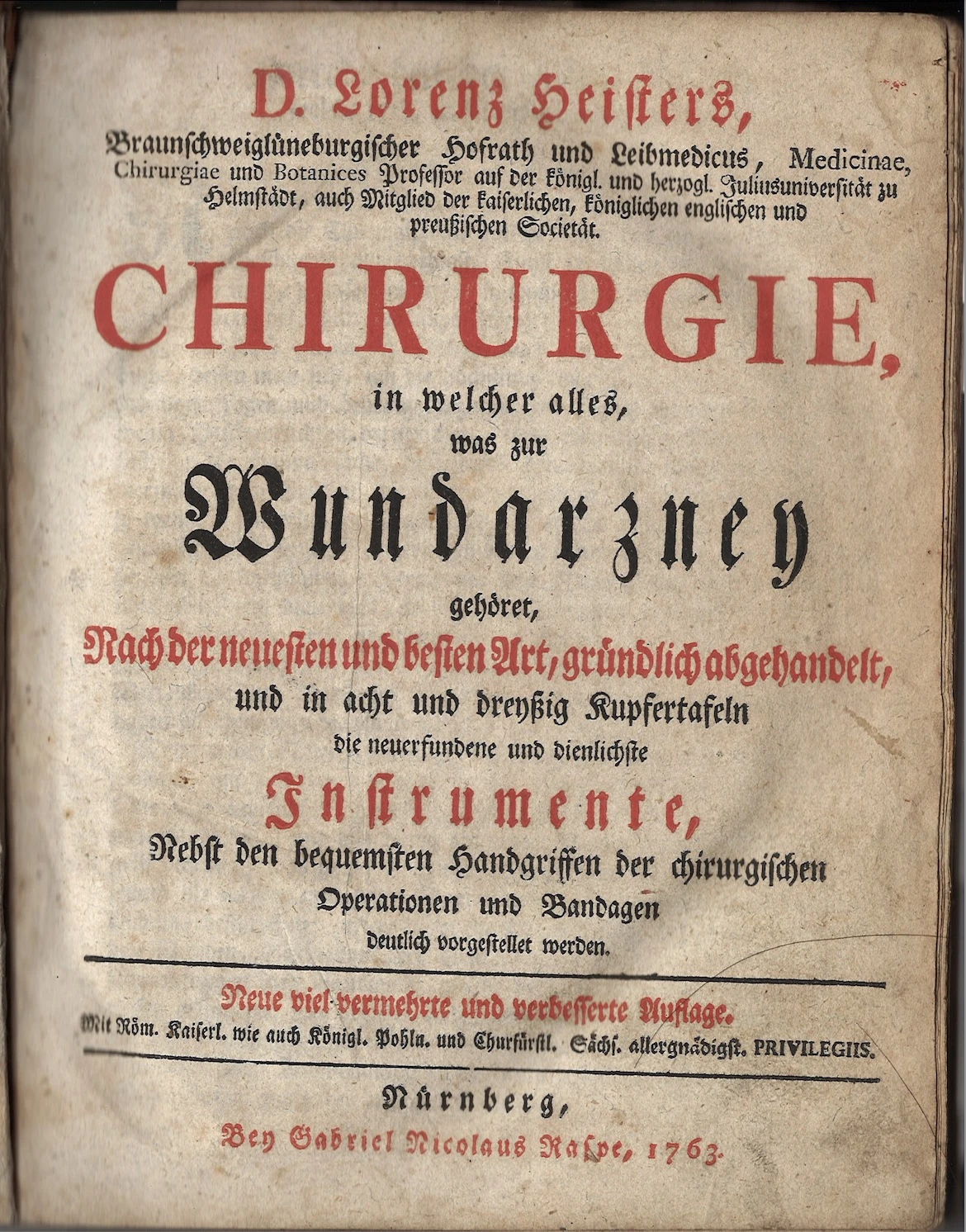
Germany, 18 C.
Heister, Lorenz
Lorenz Heister (1683-1758). Chirurgie, in welcher alles, was zur Wundarzney gehöret, nach der neuesten und besten Art, gründlich abgehandelt... ("Surgery, in which everything that belongs to the surgical procedure is thoroughly dealt with in the latest and best way..."). 16+1078+24 pages, 38 engravings. Publisher: Gabriel Nicolaus Raspe, Nuremberg, 1763.
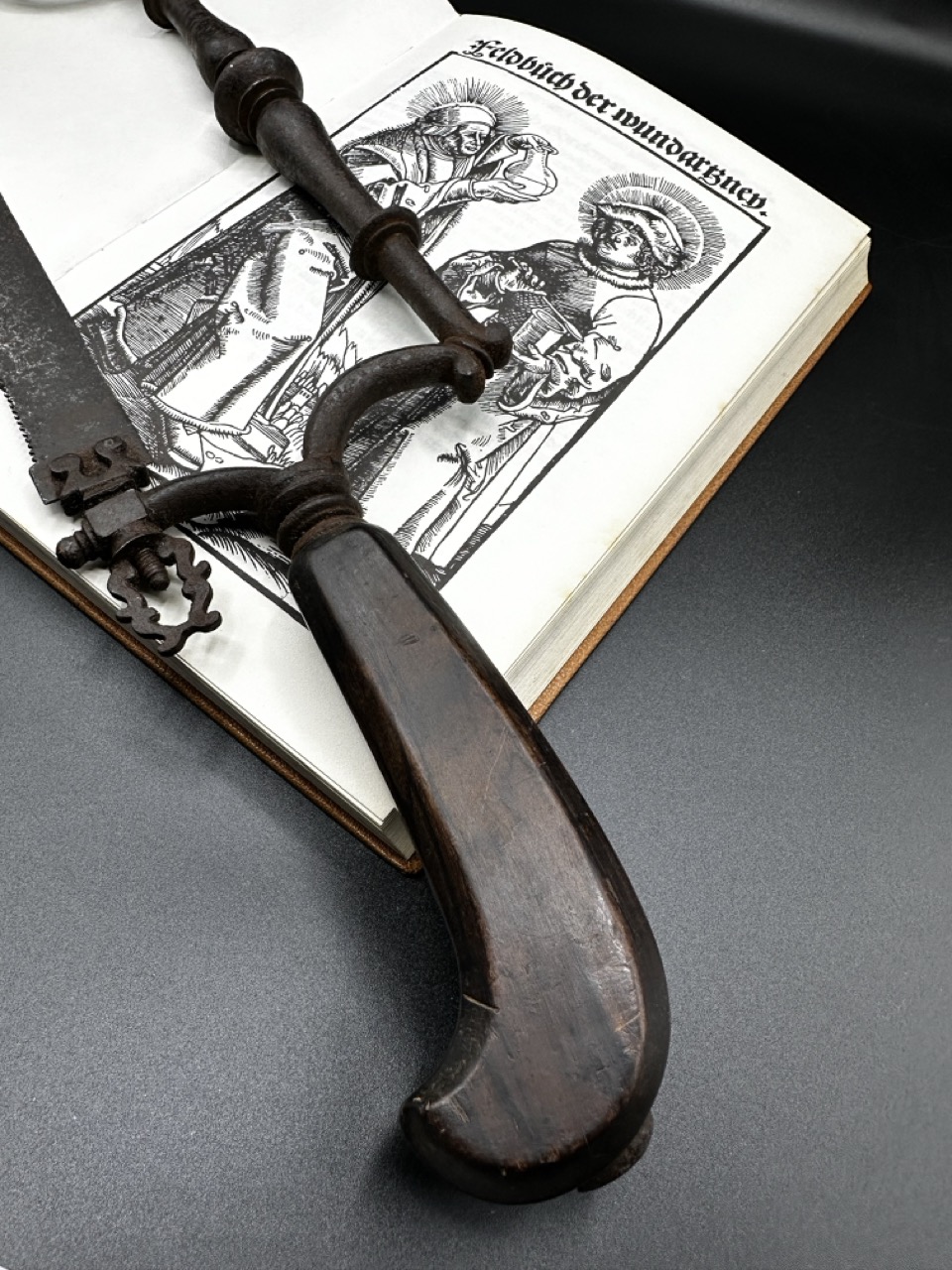
Germany, 16 C.
Gersdorff, Hans von
Hans von Gersdorff (ca. 1455-1529), Feldtbuch der Wundtartzney (German: "Field Book of Wound Medicine).
PEOPLE
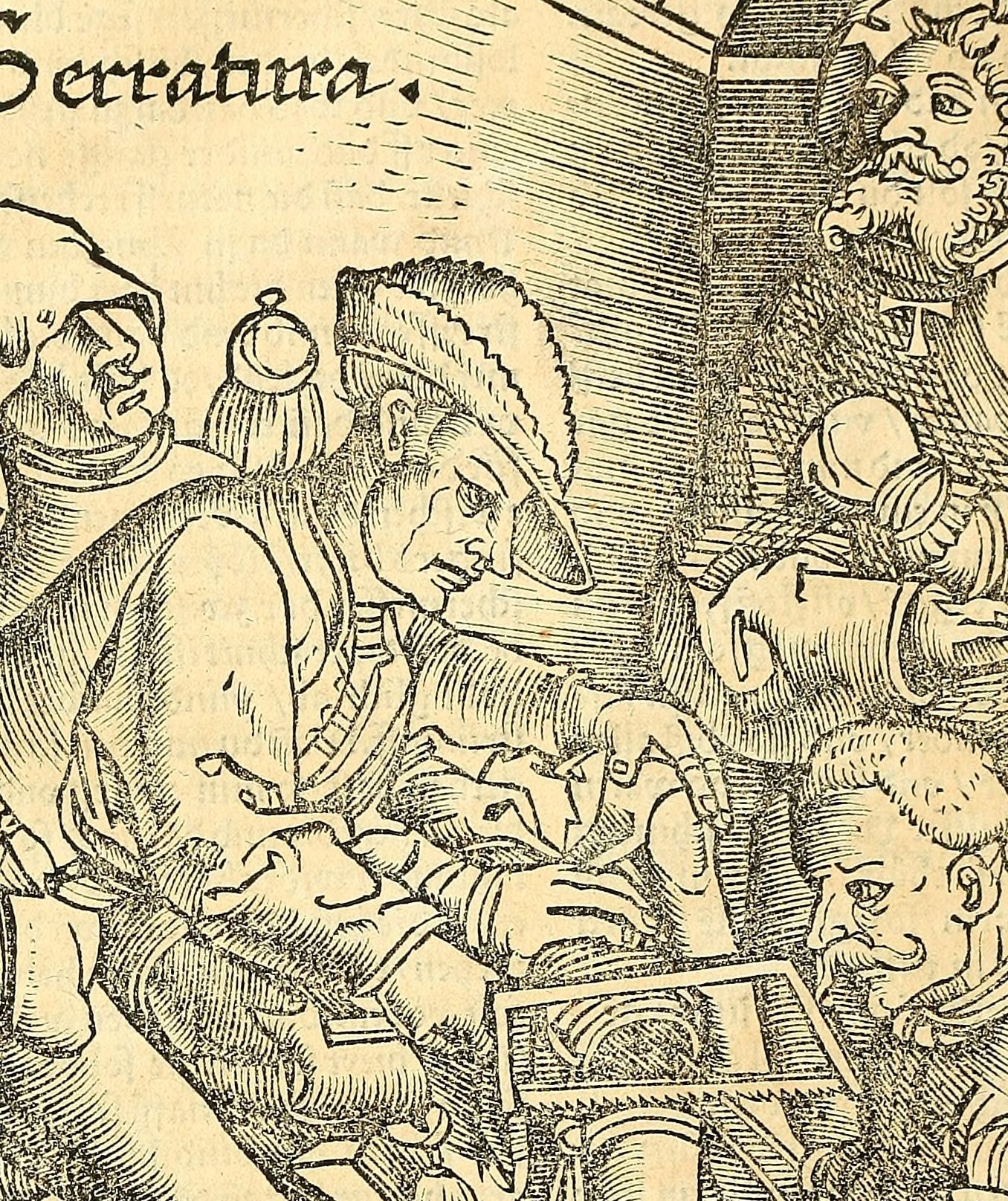
Hans von Gersdorff (1455-1529) was a German surgeon and medical writer who lived during the 15th and early 16th centuries. He is best known for his military surgical experience and his influential medical manual, the Feldtbuch der Wundarzney (Field Book of Wound Medicine), which became one of the most widely used surgical textbooks in medieval Europe. His work played a crucial role in shaping the field of surgery, particularly in the treatment of battlefield injuries, amputations, and wound care.
FIRM
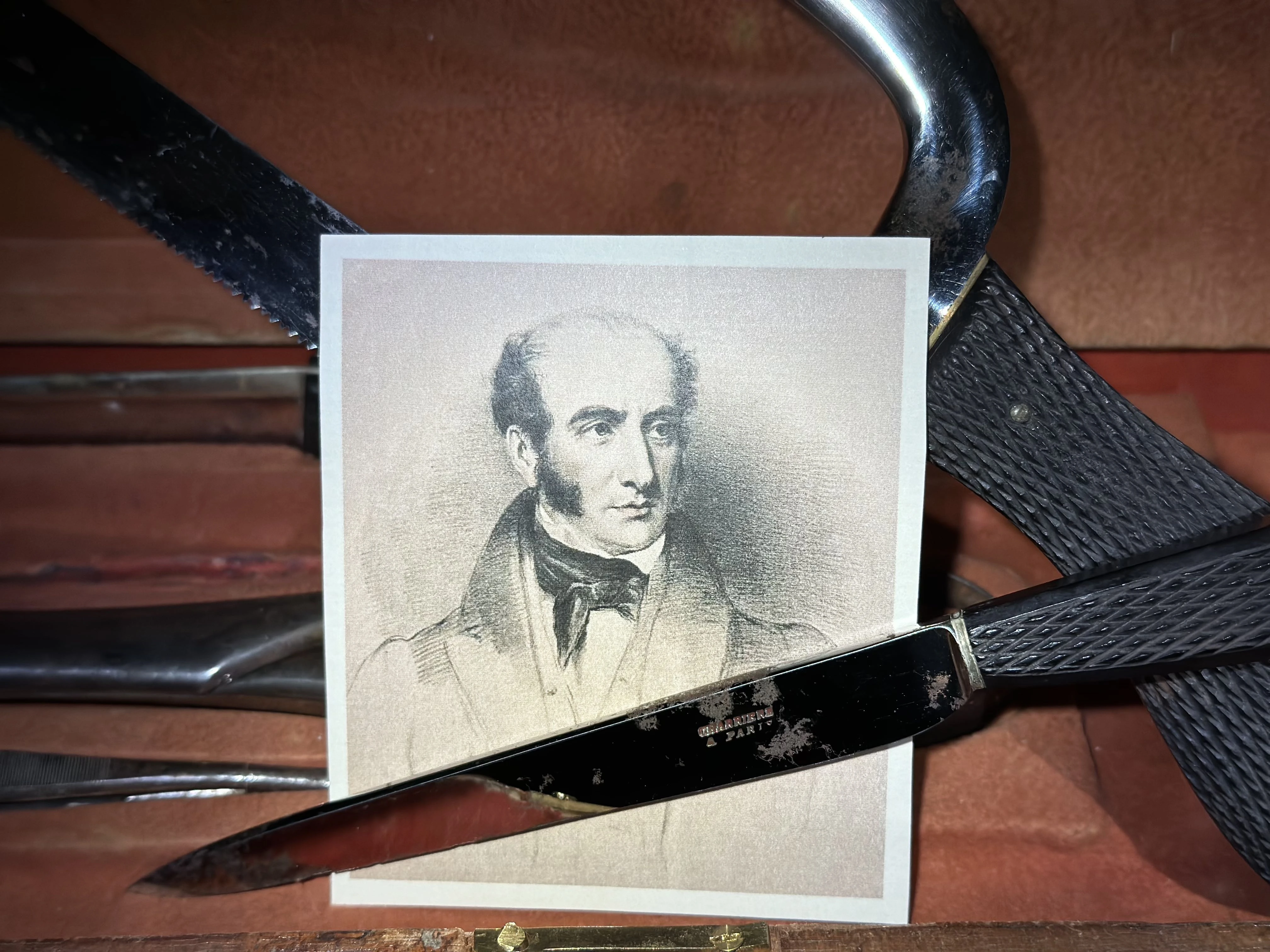
France, Paris
The French company Charrière, founded by Joseph-Frédéric-Benoêt Charrière in the early 19th century, stands as a testament to innovation in medical instrument manufacturing. Born in 1803 in Switzerland, Charrière moved to Paris as a teenager and eventually took over his mentor's cutlery workshop. He became renowned for producing high-quality surgical instruments, notably in lithotripsy and anesthesia. Charrière's technical skill, creativity, and eagerness to learn from surgeons directly influenced his designs. He is also credited with creating the 'Charrière scale,' a measurement standard for medical instruments (also known as 'French gauge'). After his death the company worked under the name Maison Collin till 1957 when it was taken over by Maison Gentile. Charrière's legacy in medical technology endures, symbolizing groundbreaking advancements in healthcare tools.
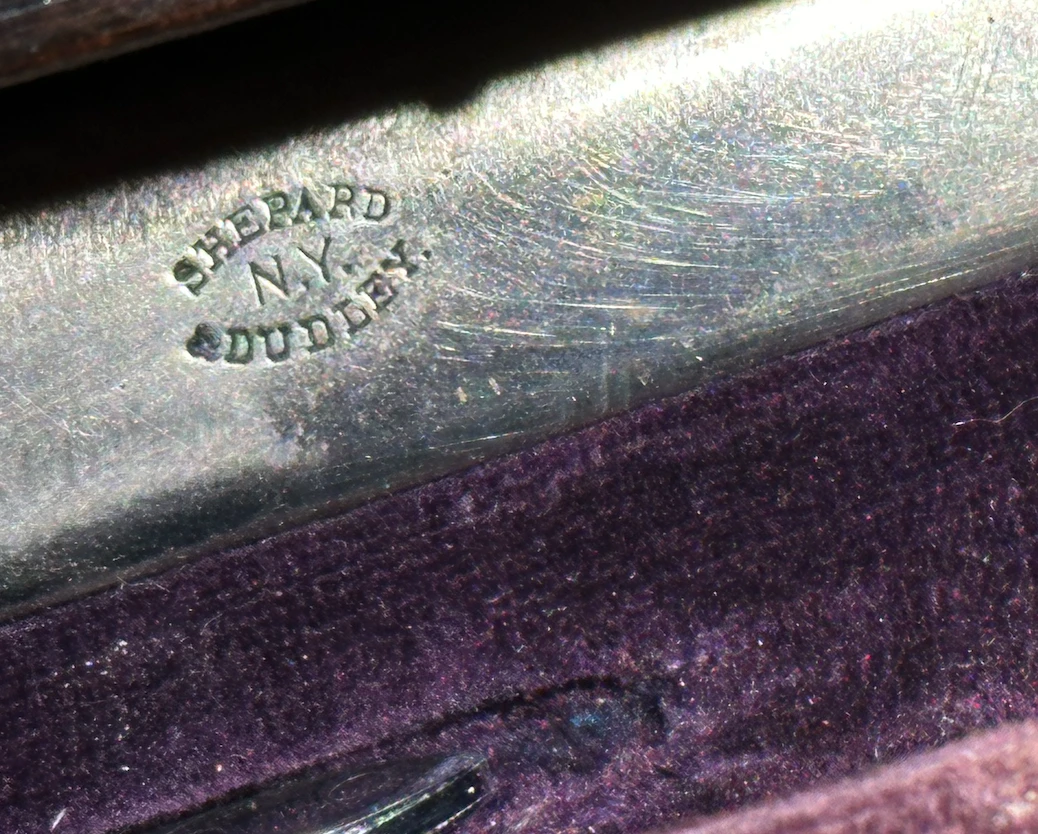
USA, New York
The company, Shepard & Dudley NY, established by instrument makers in New York, operated from 1870 to the late 1890s. The company Shepard and Dudley did not manufacture instruments during or prior to the Civil War, they were producers of surgical sets for civilian purposes post-war.
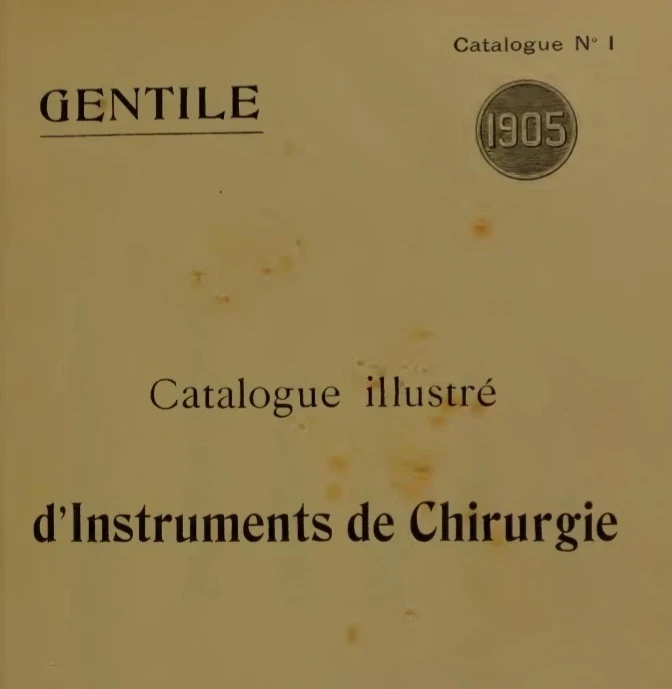
France, Paris
Maison Gentile was founded in 1891 by Pierre Gentile. Address: 49 rue Saint-André-des-arts, Paris. The founder, Pierre Gentile, was trained in the Galante workshops. The company was making metal and "caoutchouc" (rubber) instruments. Maison Gentile acquired Maison Collin (former Maison Charrière) in 1957. It closed its doors permanently in 1972.
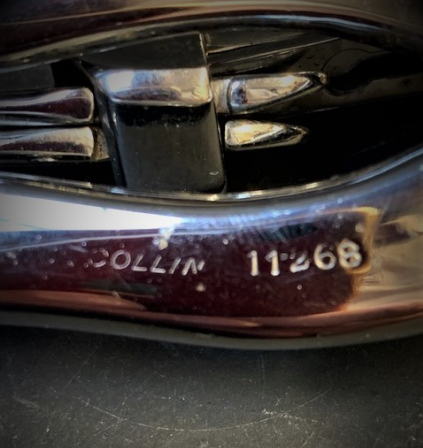
France, Paris
The French company Maison Collin was organized as a successor of the famous Maison Charrière, founded by Joseph-Frédéric-Benoît Charrière in the early 19th century. Anatole Pierre Urbain Louis Colline (1831-1923) and Louis-Apollinaire Robert bought the Charrière firm on May 19, 1866. Robert left the company at 1876. Address of Maison Collin was 60 rue Mazarine, Paris. The company worked under the name Maison Collin till 1957 when it was taken over by Maison Gentile.
MUSEUM
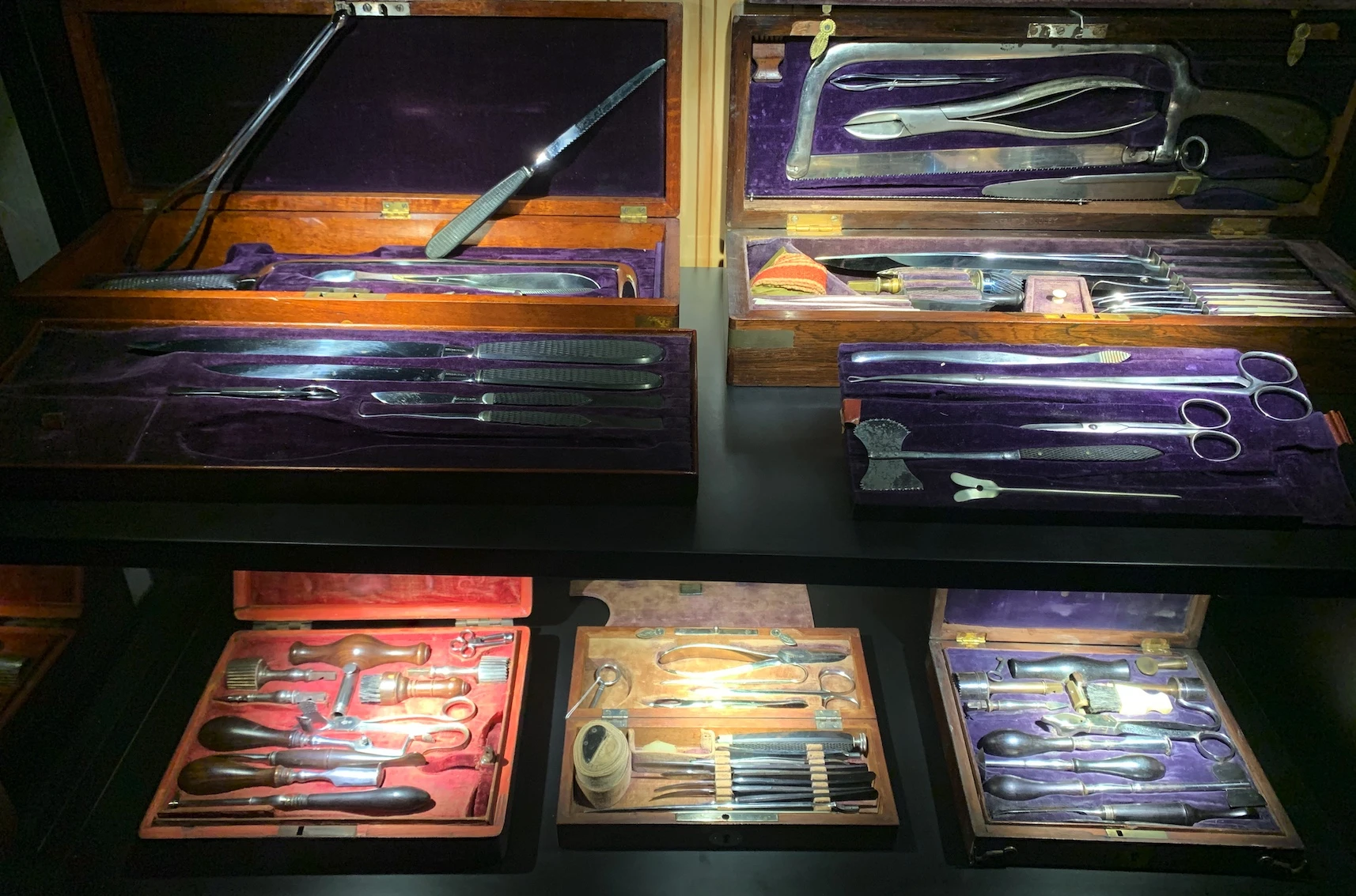
Germany, Stuttgart
A time capsule of medical history nestled in Germany, the EuroMedSim Medicine Museum, part of the European Institute for Simulation in Medicine, is a captivating journey through medical history. It showcases ancient medical and dental instruments, a rare book library, and art pieces that illuminate the intersection of art and medicine. Historical Instruments: Explore the evolution of surgical, diagnostical and dental tools, highlighting medical progress over centuries. Rare Books: Delve into a library housing ancient manuscripts and influential medical works, offering insights into the roots of medical knowledge. Artistic Expression: Witness the fusion of art and medicine through anatomical drawings, and paintings that depict the cultural and human aspects of healthcare in the past. A visit to EuroMedSim Museum is a window into our medical history, bridging ancient practices with modern medicine and honoring those who shaped the field.